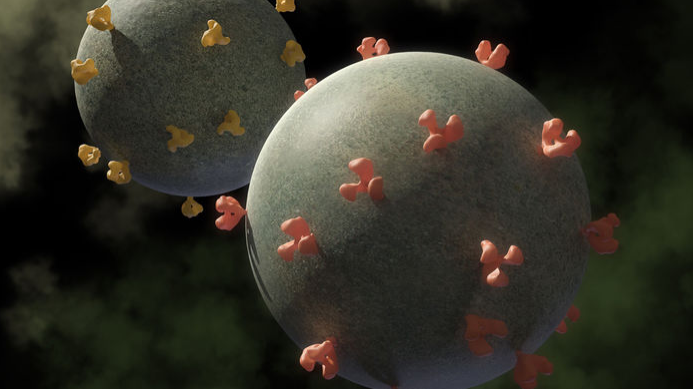What can science learn from a child who has controlled HIV without drugs for more than 8 years?
Jul. 28, 2017 Jon Cohen

PARIS—An HIV-infected child in South Africa who is controlling the virus without antiretroviral (ARV) drugs has reinvigorated the push to find ways to allow people to control the virus for prolonged periods without treatment.
The child, whose gender hasn't been revealed to help protect anonymity, was born to an HIV-infected mother and was given ARVs starting at 8 weeks old; the treatment was stopped at 40 weeks as part of a controlled clinical trial. Now, more than 8.5 years later, the virus hasn't rebounded and the child is doing fine, researchers reported here yesterday at an international AIDS conference. That doesn't mean the HIV infection has been cured, they stressed; the child still harbors low levels of the virus, invisible with standard tests but easily detected with ultrasensitive ones.
But the case may offer fresh clues to what makes long-term remission possible. In most people living with HIV who stop taking drugs, the virus comes roaring back within weeks. If long drug holidays were possible, it could simplify people’s lives, slash the costs of treatment, and reduce long-term side effects. And the research into what some call "sustained viral remission" could help inform the search for a complete cure.
So far there have only been two other reports of children whose virus remained undetectable for years after stopping treatment. Researchers think chances of long-term remission may increase if a patient starts treatment very soon after infection, as the South African child did.
The new case offers a unique study opportunity because it was part of a large clinical trial for which blood samples were stored at regular intervals. “It’s exciting that we’ve identified the child, as it could provide answers for the future,” says Mark Cotton, an HIV/AIDS clinical researcher at Stellenbosch University in South Africa who took part in the study, dubbed CHER. At the meeting, the team described genetic and immunologic studies to explain the remission, but said strong clues have not yet surfaced. “There’s a long way to go,” Cotton says.
But to some conference attendees, the case is a one-off that has echoes of the “Mississippi baby,” who had a similar history and received intense attention from scientists and the public alike—until the virus rebounded after 27 months off treatment. “Single-case reports have limited value now,” says Sharon Lewin, a leading HIV cure researcher and director of the Peter Doherty Institute for Infection and Immunity in Melbourne, Australia. “We know it happens and we need to understand why. But I’m surprised there’s so much interest in this.”
Very few people can control HIV without ARVs. These so-called “elite controllers” typically have genetic factors that predispose their immune systems to create unusually strong responses against HIV, without treatment. ARVs do the job very well, too, but the problem is that HIV can integrate and lie dormant in long-lived immune memory cells, ready to bounce back when therapy stops. To eliminate the virus—a complete cure—researchers have tried to shrink these reservoirs, so far with little progress.
But treating people shortly after they become infected might reduce the size of the initial reservoir, making it easier to drain. And even if it’s not possible to empty it, the amount of new virus emerging from a smaller reservoir might be so low that the immune system can contain it without drugs.
Asier Sáez-Cirión, a viral immunologist at the Pasteur Institute in Paris, has been following a group of 23 patients in France who started treatment shortly after becoming infected and whose virus had remained undetectable on standard tests for an average of 7 years. (They had been treated for 3 years on average but decided to stop for various reasons.) One person in the group, called the VISCONTI cohort, has gone without treatment for nearly 17 years. None of the patients had a genetic signature associated with elite controllers.
Many researchers paid little heed to the VISCONTI data when they were first reported in 2013 because it was a series of case reports, not a controlled study. “VISCONTI put the flag up and said there’s something going on, and many people thought it was rubbish and it doesn’t matter,” says clinical researcher John Frater of Oxford University in the United Kingdom. “But it wasn’t rubbish.”
Although Frater and co-workers weren’t looking to induce long-term remission, they conducted their own controlled study, called SPARTAC, of nearly 200 people who started treatment early. Treatment was halted in one group of participants after 12 weeks and in another after 48 weeks. One year later, the virus was undetectable in 14% of the people who had the 48-week treatment and in 4% of those who received the shorter one. The study, published in 2013, convinced Frater that early treatment can lead to long-term suppression in at least some people.
Latest News
More...
